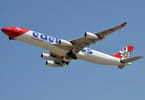The tourism industry worldwide began 2009 well prepared for a bumpy ride. The days of confused and panicked reactions to risk and crises are gradually fading into the past. From the last quarter of 2008, there was full awareness that the global economic crisis would impact on tourism, which remains widely perceived as a discretionary economic activity. Although the United Nations World Tourism Organization (UNWTO) had established tourism resilience committees, all sectors of the industry were seeking to be resilient in their own way.
The shared challenge for the world tourism industry in 2009 has been the global financial crisis. Overall, international tourism arrivals between January and August globally declined by 7 percent over the same period in 2008 but this hid other declines including per capita spending and travelers taking shorter journeys both in terms of distance and time. The indications from the UNWTO are that a small resurgence had commenced during the second half of 2009.
Those destinations and tourism businesses that focused on value for money product and affordability rode out the global financial crisis (GFC) relatively well, with Africa actually recording growth. Those destinations that touted themselves as centers of luxury and indulgence faced a very challenging year. Dubai was a prime example of the latter. The coincidence of opening many properties in Dubai pitched at the top end of the accommodation market during the nadir of global economic negativity proved to be a toxic mix for Dubai in 2009. Dubai, Abu Dhabi and other Gulf states are now undertaking a building boom of 3 and 4 star hotels to appeal to a wider travel market.
In the airline sector there was a decided shift in demand towards low cost carriers and the majority of full service airlines struggled to break even. Demand for first and business class seats plummeted during 2009, although airlines that introduced premium economy seats experienced a surge in demand for these especially from the cost conscious business travel sector. Traditional big spenders on business travel including business people from the financial sector were under withering and hostile public and media scrutiny to cut spending as many of them in Europe and North America were working for businesses that were being heavily subsidized by taxpayer funded bailouts. One of the best examples of an airline that has ridden out the economic storm of 2009 has been the Australian carrier Qantas, which has significantly expanded the operation of its low-cost carrier brand Jetstar and cut back on the operations of its Qantas full-service carrier brand. Qantas was one of the few major international carriers to post a profit during 2009 although by its own standards the profit was small.
Cruising was one of the bright spots in tourism during 2009. The fully inclusive nature of cruise tariffs (covering accommodation, transport, on board entertainment and meals) led to a substantial growth in cruise patronage and a broadening of cruising’s overall appeal to the travel market across a growing demographic range.
The top end of the accommodation market, in common with the premium end of the airline market had a tough year in 2009 and there was heavy pressure for cost cutting and discounting in luxury hotels. The move towards multi branding of hotels practiced so successfully by the ACCOR group has proven to be a very successful resilience strategy. In this case the mid range hotels have subsidized the struggling premium brands.
Tourism in 2009 continued to be threatened by terrorism. The bombing of the JW Marriott Hotel in Jakarta in July 2009 by a suicide bomber, who was a paying guest of the hotel, exposed a new and disturbing security threat to hotels around the world. Pirates based in lawless Somalia not only threatened freight shipping but even made an attempt to attack a passenger cruise liner. The attack was repelled by the ship’s security detail. At every link in the tourism chain, security issues remained a key concern during 2009. Crime in the Caribbean targeting tourists was a matter of particular concern to Trinidad and Tobago .The biggest looming tourism security threat may lack headline making blood and gore but cyber crime and terrorism has the potential to threaten the financial viability of many tourism and hospitality businesses which lack the necessary defenses.
Natural disasters will always be a threat to tourism. The September 28 tsunami which hit the southern coast of the Samoan island of Upolu and American Samoa caused massive damage to coastal tourism resorts and resulted in the death if at least ten tourists among the overall death toll of 200 on the two Samoas. As was the case with the 2004 Indian Ocean Tsunami, the safe location of coastal tourism accommodation was re-ignited as a major issue of concern. Samoa’s tourism industry with support from the Pacific Asia Travel Association has been quick in taking action to restore confidence in tourism since the tsunami.
آڪٽوبر ۾، جي UNWTO released two important initiatives. The first was the release of its incredible web site service www.sos.travel which is an excellent global tourism crisis management tool. The second was the release in Tashkent of its “Roadmap for Recovery,” which is a guide to responding to economic downturn.
Climate change is the creeping crisis that impacts widely on the tourism industry. As this author mentioned in a recent eTN article, the December 2009 Copenhagen Climate Change Conference fell well short of its aim to of achieve a binding global accord on emissions reduction. The tourism industry has little option to carry on in its active response to climate change and emission reductions irrespective of the outcome of global conferences.
The most positive observation that can be made is that during the first decade of the 21st century the global tourism and hospitality industry has become increasingly professional in its approach to the management of risk and crisis. From the large organizations including UNWTO, the World Travel & Tourism Council and PATA to individual tourism and hospitality businesses risk and crisis management has become integral part of the management toolkit rather than events that impel panic reactions.
In 2009, the tourism industry faced some stern challenges but has emerged from this year somewhat battered but facing 2010 with confidence at tourism begins a gradual resurgence. If 2009 was the year of tourism resilience, 2010 will hopefully be the year of tourism resurgence.
The author is a Senior Lecturer in Tourism at the University of Technology-Sydney
هن آرٽيڪل مان ڇا وٺو:
- The bombing of the JW Marriott Hotel in Jakarta in July 2009 by a suicide bomber, who was a paying guest of the hotel, exposed a new and disturbing security threat to hotels around the world.
- The coincidence of opening many properties in Dubai pitched at the top end of the accommodation market during the nadir of global economic negativity proved to be a toxic mix for Dubai in 2009.
- The top end of the accommodation market, in common with the premium end of the airline market had a tough year in 2009 and there was heavy pressure for cost cutting and discounting in luxury hotels.






















